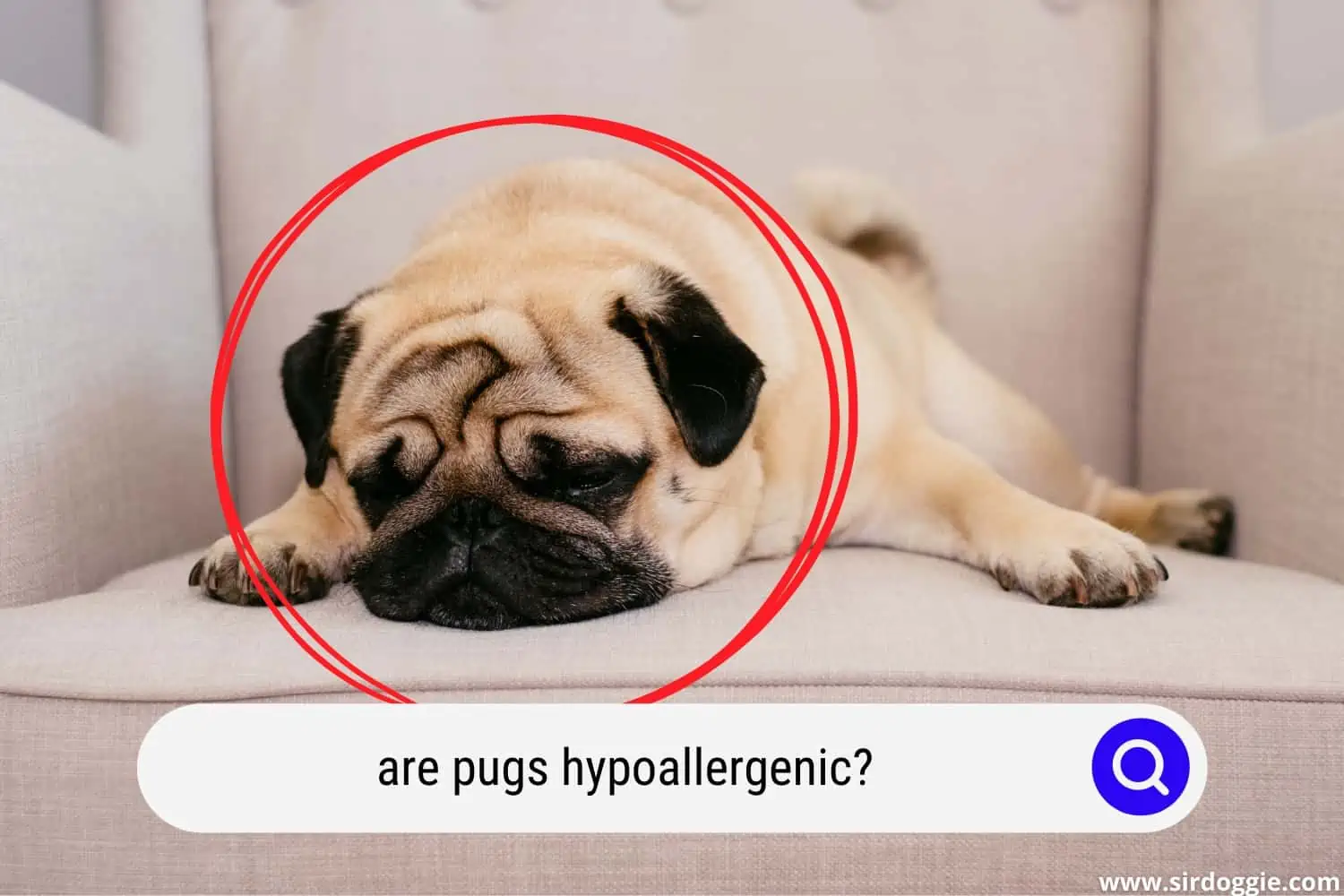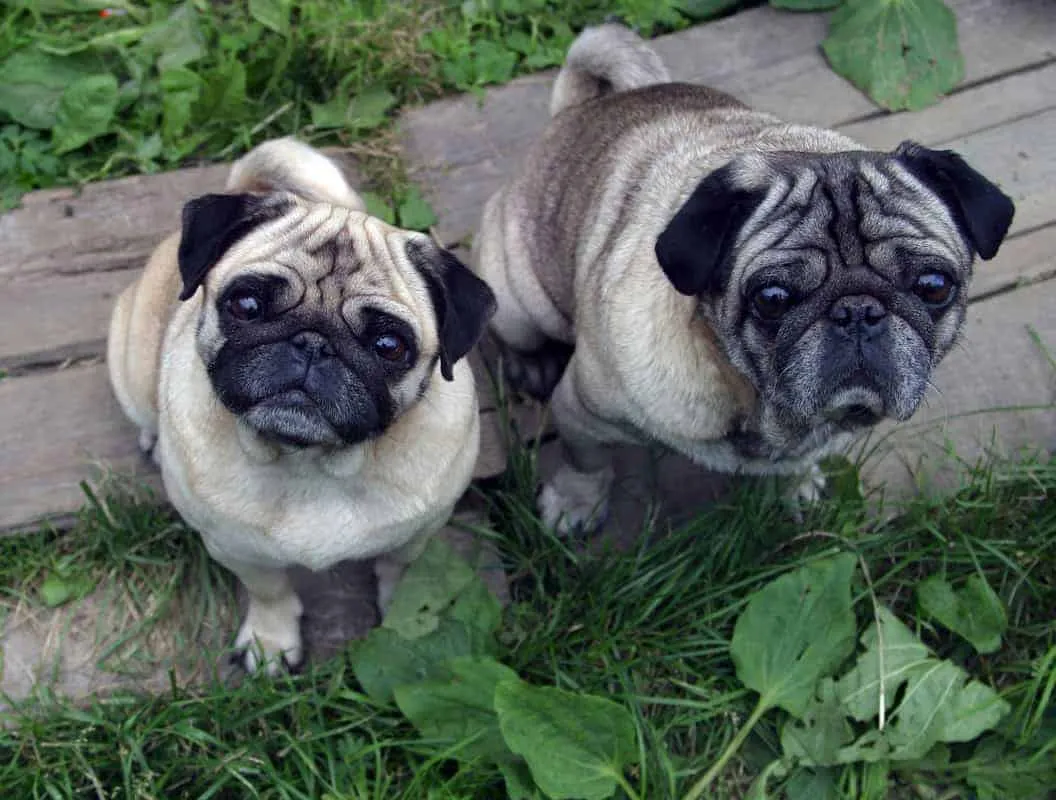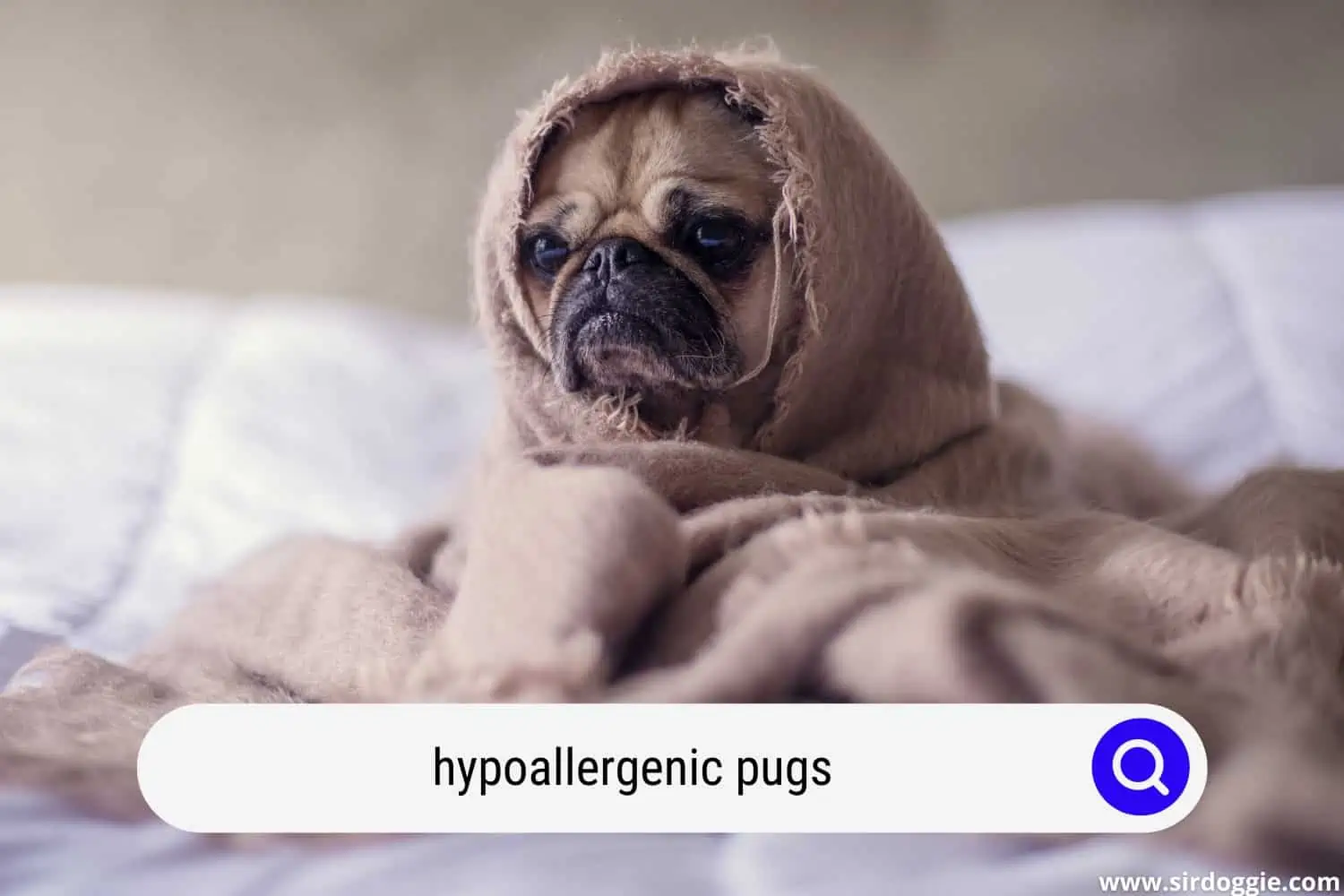Are Pugs Hypoallergenic? Pugs and Allergies Guide
Are pugs hypoallergenic? Do Pugs Shed? Unfortunately not, as they are heavy shedders and can sometimes produce extreme allergic reactions in a few people.

Who can resist that charming comical face and deep wrinkles of a pug? They are cute, compact, and bred to be lap dogs.
Pugs are simply charming with a playful and mischievous personality.
Needless to say, they are often described as a lot of dogs in a small space.
But there are plenty of pet parents who have learned how to live and adapt to a Pug that gives them a bit of an allergic reaction.
So if you’re a Pug fan and want to be a Pug parent, you may still be able to learn how to live together and minimize some of the discomforts that come from allergies.
Related Reading: Are Pugs Happier in Pairs? [ANSWERED]
What Does Hypoallergenic Dog Mean?
A hypoallergenic dog means they have very few or no allergy-producing substances known as allergens. These dogs don’t tend to cause an allergic reaction.
If a person has allergies, they might be looking for hypoallergenic breeds. Remember… no dog breed is 100% hypoallergenic.
The hypoallergenic dogs shed very little or no fur. Because of the minimal amount of shedding, the allergy-causing dander is released in a very small amount.

Is a Pug High Maintenance Dog?
The Pug breed is a low-maintenance dog and does not require extra grooming. Due to their small size, they are a good choice for apartment dwellers as well.
Even though the coats are short, Pugs are a double-coated breed.
Despite the short coat, pugs are heavy shedders and shed even more so in the summertime.
Let’s have a look at Pug’s grooming needs:
- The short coat is easy to groom with regular brushing. It saves you from loose hair flying around your house.
- Give a weekly warm bath with a good quality shampoo and conditioner. Shampooing softens the fur and thus decreases the pug’s dirt-repelling ability. This also helps to get the shedding period over with more quickly.
- Clean your pug’s folds and wrinkles regularly. These folds are home to germs, dander, and dirt. If allowed to become damp or dirty, they will become a hotbed of infections. Use cotton balls or wipes to wipe out the folds.
- Brush your pug’s teeth at least two or three times a week to remove bacteria and tartar buildup. Use toothpaste specifically designed for canines, as human toothpaste can be harmful to pugs.
- Trim your pug’s nails regularly. This will keep your legs from getting scratched when your pug enthusiastically jumps up to greet you.
- Your Pug’s eyes should be clear with no redness or discharge.
- Once a week, check your pug’s ears, and if needed clean inside the ear with a cotton ball and a gentle cleanser. Ears should smell good with no exceptional amount of wax.
- When you groom your pug, look inside its mouth and ears. Check for sores or signs of infection such as redness, tenderness, or inflammation on the skin.
Your regular grooming and careful weekly exam will help you spot potential health problems early.
Make grooming a positive experience for your pug, filled with praise and rewards.
Arm yourself with the right grooming tools that will help you keep your pooch looking great.
When it comes to finding grooming tools that can be used for grooming your Pugs, here is a list that can help:
- Pin brush
- Slicker brush
- Grooming Rake
- Dog Nail clippers
- High-quality dog shampoo and conditioner
- Dog Toothbrush and toothpaste
- Ear cleaning solution and cotton balls
Pugs need a low-maintenance exercise routine. Dedicated walks and play sessions are enough to keep them healthy and satisfy their curious nature.
They are generally well-behaved dogs but can have an abundance of energy if they do not get enough exercise.
Do Pugs Need a Lot of Attention
If you own a Pug, expect him to follow you around in the house, sit on your lap, and want to sleep in bed with you. Pugs need a lot of attention from their owners and family to stay happy.
Pugs like being around their owners and that’s why they don’t make good dogs when left alone by their owners.
A pug does best when kept near a human companion. They require enough hours of daily companionship and play sessions.
A lonely and bored pug can be destructive and mischievous.
Behavioural issues may stem if they are not socialized and trained at an early age. Pugs need training to gradually learn to be left alone.
Here are some ways that may address the excessive attention needs of a Pug:
Establish a predictable routine for your Pug
You must establish a daily routine for your Pug and this includes mealtime, potty time, exercise time, training time, and playtime.
Your dog will understand when they will get attention from their owners and when not.
This will help them to spend the remaining time for a nap and play with their favourite toys.
Meeting your Pug’s needs
Before you leave the house, you must ensure that your pet’s needs are well taken care of.
You must make sure to take care of the following things before you leave:
- Feed your Pug before you leave. They are greedy eaters and become satisfied when they are full.
- Provide sufficient activities and social interaction. This will reduce their destructive behaviour.
- Give your dog chew toys to keep them busy while they are alone.
Establish a positive reinforcement protocol
Rewards like treats, playtime, and chew toys are the motivators for your little dog.
You can reward your dog for showing some independence, settling down, and sitting quietly.
Never punish your furry friend for negative behaviour.
Provide training to deal with separation anxiety
Make your Pug learn some basic commands like sit and stay. Your dog can even be trained to sit quietly and be left alone in the house.
Teach your dog to settle down and sit comfortably.
Also, crate-train your dog and make the crate comfortable for your Pug.
Provide an area for relaxation
You must provide a secure area to relax and play for your Pug. This will help them to avoid any destructive behaviour when you are not around.
How Do You Stop Dog Allergies
Allergic reactions from dogs can range from mild sneezing to much more severe symptoms.
Some symptoms of dog allergies are:
- Coughing and wheezing
- Runny nose
- Itchy skin or eyes
- Sneezing
- Puffiness around the face
If you are allergic to pugs, but still want to keep one, don’t worry! Consider the following steps that you can take to manage your allergy symptoms.
Regular brushing
Maintain a regular brushing routine for your pug. You must ensure to do it outdoors to avoid excess hair in your home.
Regular bath
Give your pug a weekly bath to remove dander from its coat. Regular brushing and bathing can minimize dander levels on your pug.
Keep your bedroom pet-free
Keep your pug outside your bedroom where you spend a lot of time. Restrict him to only a few rooms of the house.
Use a vacuum in your house
Invest in an efficient vacuum. Use a vacuum regularly and keep your floor and carpets clean.
Consider an air purifier
Use an efficient air purifier and maintain good ventilation to help reduce airborne pug allergens.
Keep your house clean
Dust and clean your home thoroughly and also your pug’s toys and bedding. Wash your dog’s rugs, beds, cushions, blankets, and washable play items and toys regularly to avoid dander build-up.
Consider allergy shots
Allergy shots or allergy vaccines will help you develop antibodies so that you won’t get allergies when exposed to some allergens.
With a few efforts and lifestyle changes, you can manage your allergies and live happily with your pug.

Conclusion
Pugs make great pets for families with children, due to their playful and loving nature.
If you are allergic and intolerant of dog hair in your house, then this breed is not for you.
Of course, it depends on how bad your allergies are. Some pet parents make the sacrifice to invite their favourite type of dog into their family, but this is a case-by-case situation.

Family Dog Expert Author
Hi there! I’m Stuart, a devoted dog lover and family dog expert with over a decade of experience working with our furry companions. My passion for dogs drives me to share my knowledge and expertise, helping families build strong, loving bonds with their four-legged friends. When I’m not writing for SirDoggie, you’ll find me hiking, playing with my beautiful dog, or studying music.